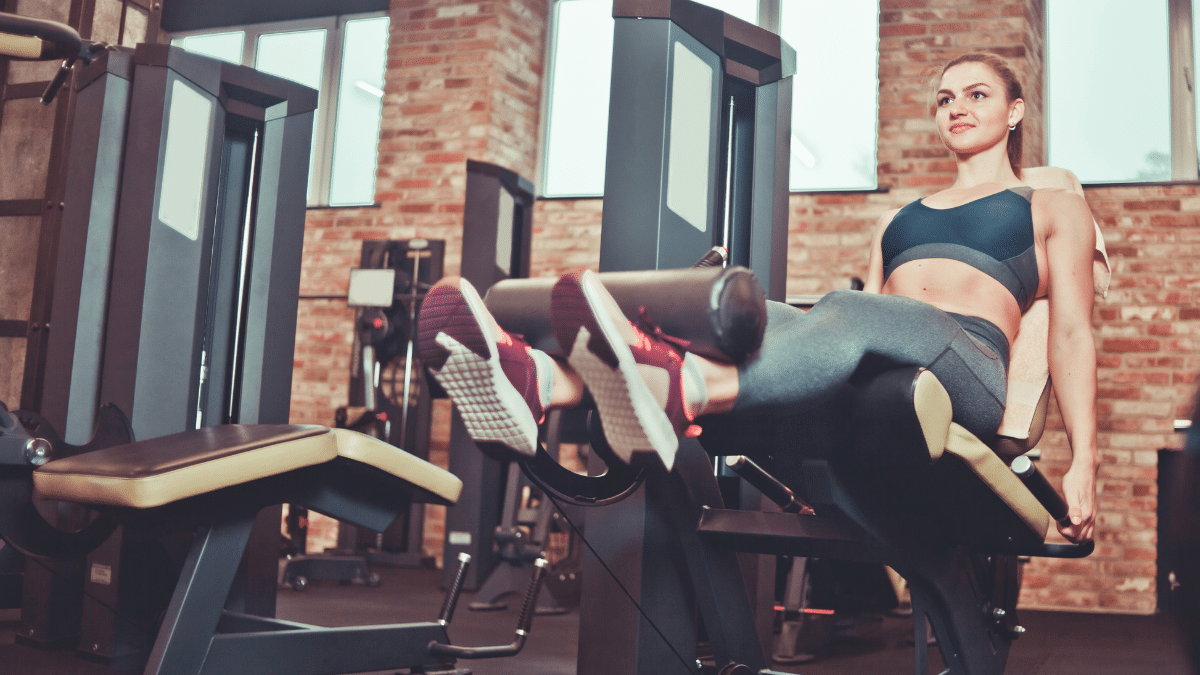Note from Greg:
This guest post comes from Dr. Eric Helms. If you don’t know Eric, he’s a successful coach for 3D Muscle Journey, an INBA natural pro bodybuilder, a scientist, and an all-around brilliant human being. If you didn’t know already, he’s one of my partners (along with Dr. Mike Zourdos) for MASS – a monthly research review breaking down the latest science that’s directly relevant to strength and physique athletes.
As the evidence mounts, it becomes more and more clear that hypertrophy can effectively occur at heavy, moderate, light, and even very light loads (as confirmed by the most recent meta-analysis on this topic [1]). However, the caveat is the data on this subject are almost entirely on sets taken to failure. Considering heavy-load sets result in high muscle activation right from their initiation (more on this in a bit), it’s probably the case that light-load training needs to be completed at or near failure to be comparable to heavy-load training on a set-to-set basis (2).
For anyone who is late to the party thinking, “Say what? I thought load needed to at least be adequately heavy to be effective for hypertrophy,” let me clarify before getting to the meat of the article.
When you’re lifting heavy weights (~80% 1RM+), the vast majority of muscle fibers are recruited from the beginning of a set’s initiation (3, 4). Muscle fibers are under mechanical strain – the primary driver of hypertrophy – right away. However, low-load training to failure also puts a vast majority of fibers under mechanical strain … eventually. How? Well, in a set of 30 reps to failure, as low recruitment threshold fibers become fatigued, high recruitment threshold fibers are recruited to “pick up the slack” (5). Subsequently, they too end up getting fatigued and are unable to continue to produce force as failure approaches. Thus, at the individual fiber level, by the time you reach the final reps of a high-rep, low-load set, all fibers in the trained muscle are recruited and exposed to a mechanical tension stimulus.
This is good news, right? It means you can train with low loads and potentially experience less joint strain and still progress (if your goal is hypertrophy). However, progressive overload still matters. If you decide to just train in the 12-20 rep range, you should still be getting stronger in that rep range over time, as this would indicate you are indeed increasing muscle size. Also, let’s step away from the mechanism and consider some practical limitations of low-load training near to failure before we start talking about implementation.
1. High-rep sets to failure on certain exercises are disproportionately fatiguing compared to other exercises: A couple of recent studies highlight this point nicely. In one study, participants reported greater discomfort performing knee extensions to failure with 30% compared to 80% of their maximum voluntary strength. In a similar study, resistance-trained males had greater suppression of force production (their strength was lower) after completing four sets of leg extensions with 30% 1RM compared to 80%. In simple terms, there is a reason 20-rep sets of squats are called “widow makers.” When performing high-rep lower body movements, cardiovascular and local muscular fatigue reach extreme levels. Having done this in my earlier lifting years, I can tell you that rest periods have to increase, motivation is quickly sapped, puking becomes a real possibility, and the likelihood of you completing RDLs, lunges, leg extensions, leg curls, and calf raises with any quality after you finish 3×20 on squats is very low. And by the way, widow makers aren’t typically even done to true failure (which we’ll discuss in a second).
2. Training programs in studies make concessions: When a study is conducted, researchers have to create a program that is not too time intensive for the researchers and the participants, and they have to cater to the lowest capability level of the participant cohort (within the specific population) to ensure completion. The necessity of these concessions results in pretty unrealistic training programs compared to the real world. Specifically, participants in studies often train 2-3 times per week, often performing just 2-4 exercises per session. Thus, if there are two groups performing the leg press, the bench press, and a bicep curl, one group doing 3 sets of 80% 1RM to failure on each exercise, and another group doing the same but with 40% 1RM, the huge metabolic fatigue induced by the latter group is less likely to negatively affect subsequent exercises like it would in a real-world leg day (like the example I gave in number 1).
3. Training to failure in a lab is not the same as in a gym: I’ve conducted training studies, and I can tell you that failure means exactly that when it comes to a study. You do the exercise while a group of researchers spot you and verbally motivate you to complete repetitions until you literally attempt a rep you cannot complete. In the gym, you are most likely going to stop when it feels like failure, versus being forced to go to failure. Subsequently, the vast majority of analyses on low-load training are examining training programs where true failure is achieved on each set.
4. Gauging distance from failure is harder with high-rep sets: If the standard way to train to failure in the real world is to simply do reps until you don’t you think you can do any more, we have to consider that people aren’t good at gauging distance from failure when they have to do a lot of reps (6). It’s relatively easy to tell when you are near true failure when you are only doing a total of 4-8 reps with a pretty heavy weight; when you simply cannot produce enough force to keep the weight moving, you aren’t in a ton of pain or out of breath, in most cases. However, the haze of cardiovascular fatigue and local pain on something like a squat when doing an AMRAP with 70% of 1RM (which allows ~10-20 reps depending on the individual) means you will underestimate how many repetitions you have left when further from failure, until you are really close to it (a true 9 RPE, or 1 repetition remaining prior to failure). When you think you are at a 7 RPE (just 3 repetitions remaining prior to failure) on an AMRAP with 70% 1RM on squats, there is a strong possibility you might actually have ~6 repetitions remaining, not 3 (6).

All in all, we need to consider the implications of the above and how they impact low-load training for hypertrophy in the real world. Let’s say your current approach is a four-day upper/lower split including a mix of compound and isolation movements in the 4-15 rep range, with the final sets for each muscle group approaching and sometimes reaching failure. This is arguably an “evidence-based approach” that would be appropriate for your average but serious hypertrophy enthusiast (7). Now let’s say that based on the emerging research on low-load training, you decide to change all your movements to the 15-25 rep range because you enjoy getting a pump more than lifting heavy, and you experience some joint stress when lifting moderate to heavy loads. At face value, this is a reasonable thing to do.
However, based on what we know, you’d likely need to take all of your sets to or near failure in order to put this program on equal footing with what you were doing previously; we’ll say an 8-10 RPE or 0-2 repetitions remaining after a set’s completion. Especially on leg day, that is going to cause some issues. The subsequent fatigue, pain, motivational drain, and GI distress from just your first compound movement on leg day is likely going to force you to reduce load substantially and/or increase rest periods substantially, just to complete your training sessions. Additionally, I’m skeptical that you’d reach true 8-10 RPEs on all your sets. Or rather, you may reach these perceived exertion values, but it may be due to pain inhibition and perceptual fatigue, rather than true muscular failure, which theoretically might not result in the same level of mechanical tension at the fiber level.
If you do decide to incorporate high-repetition, low-load training to or near failure in your program, that’s absolutely fine. However, you need to be aware of the potential practical concerns that may result in your real-world results not matching the findings in research. A simple solution I’d probably recommend is keeping your compound movements – especially lower body, free-weight compounds – in the moderate-load, moderate-repetition zone, while also staying a bit shy of failure. Doing sets of 6-8 reps between a 7-9 RPE (1-3 repetitions short of failure) is going to land in the ~75-85% of 1RM range for most people, and the vast majority of that volume will be “effective” for producing hypertrophy. Then, when you get to your isolation exercises and machine movements, you won’t be thrashed, and you can do your high-repetition training with fewer potential confounding factors.
References
- Schoenfeld, B.J., et al., Strength and hypertrophy adaptations between low- versus high-load resistance training: A systematic review and meta-analysis. J Strength Cond Res, 2017.
- Ogasawara, R., et al., Low-load bench press training to fatigue results in muscle hypertrophy similar to high-load bench press training. International Journal of Clinical Medicine, 2013. 4: p. 114.
- Pinto, R., et al., Relationship between workload and neuromuscular activity in the bench press exercise. Medicina Sportiva, 2013. 17(1): p. 1-6.
- Vigotsky, A.D., et al., Effects of load on good morning kinematics and EMG activity. PeerJ, 2015. 3.
- Burd, N.A., et al., Bigger weights may not beget bigger muscles: evidence from acute muscle protein synthetic responses after resistance exercise. Appl Physiol Nutr Metab, 2012. 37(3): p. 551-4.
- Perlmutter, J.H., et al., Total Repetitions Per Set Effects Repetitions in Reserve-based Rating of Perceived Exertion Accuracy: 3648 Board #95 June 3 8: 00 AM – 9: 30 AM. Medicine & Science in Sports & Exercise, 2017. 49(5S): p. 1043.
- Helms, E.R., et al., Recommendations for natural bodybuilding contest preparation: resistance and cardiovascular training. Journal of Sports Medicine and Physical Fitness, 2015. 55(3): p. 164-78.
Read Next
- The “Hypertrophy Range” – Fact or Fiction?
- Can We Predict Muscle Growth?
- The New Approach to Training Volume




